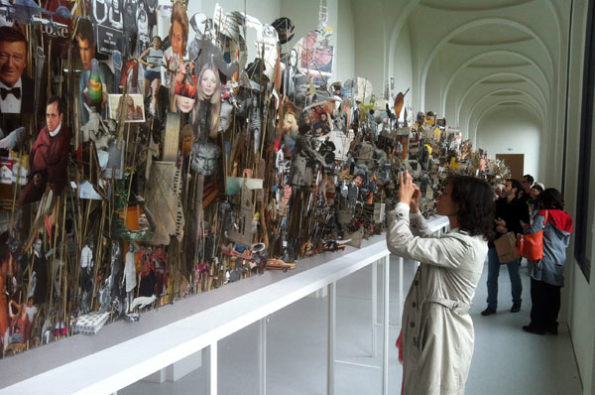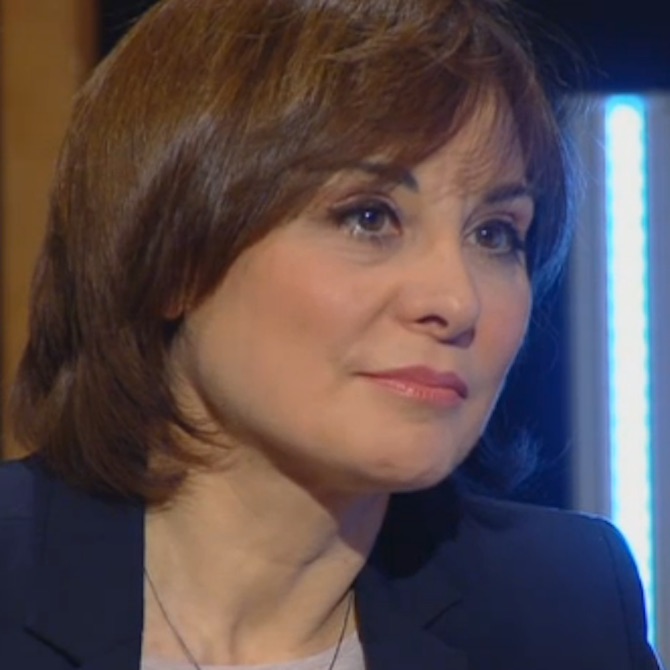Search
To search for an exact match, type the word or phrase you want in quotation marks.
A*DESK has been offering since 2002 contents about criticism and contemporary art. A*DESK has become consolidated thanks to all those who have believed in the project, all those who have followed us, debating, participating and collaborating. Many people have collaborated with A*DESK, and continue to do so. Their efforts, knowledge and belief in the project are what make it grow internationally. At A*DESK we have also generated work for over one hundred professionals in culture, from small collaborations with reviews and classes, to more prolonged and intense collaborations.
At A*DESK we believe in the need for free and universal access to culture and knowledge. We want to carry on being independent, remaining open to more ideas and opinions. If you believe in A*DESK, we need your backing to be able to continue. You can now participate in the project by supporting it. You can choose how much you want to contribute to the project.
You can decide how much you want to bring to the project.

A constructive analysis of dOCUMENTA (13)
Documenta has become the contemporary art event, par excellence. Proclaimed as the thing that marks the pace for art of the moment, it is hardly surprising that it provokes expectations and deceptions in equal measure.
If Documenta is a referent, it is logical that the artistic director of the moment feels the weight of the institution and is aware that the position constitutes the maximum point of visibility of his/her professional career and all too often (or at least this is what occurred in the last two editions) ends up getting lost in gestures, or worse, in justificatory posing behind conceptual pirouettes. In contrast to the previous ambiguity and the numerous justifications of curatorial discourse, we confront dOCUMENTA (13) with as open a mind as possible.
Prejudices
Loads. The prior indicators couldn’t be worse. The artistic direction of dOCUMENTA (13) proclaimed a no-concept; a never-ending team, not of curators but of agents (secret? with a licence to kill?); another generous list of participants amongst whom figured artists, scientists, thinkers, writers, etc; a secret list of artists that wasn´t revealed until the moment of the press conference (zealously guarded in an envelope like in the Oscars ceremony?) and a proliferation of locations that harbingered the visit was going to be exhausting, very exhausting…
Critical aspects
The excuses soon started flowing: a press conference in which the artistic director insisted on her “no-concept”, to then begin reading her essay, of which she omitted pages and pages; the explicit desire to evade direct communication, that would purportedly belie the complexity of reality and the present day; a catalogue that isn’t called a catalogue, but wait for it, “The Book of Books” (“Das Buch der Bücher”) like the Bible, in fact; curators that aren’t called curators but agents; an educational programme that is called “The Maybe Education and Public Programs”; the constant repetition that it is an experiment or study; the claim that the aim is to reproduce simultaneity, proliferation and speed, and that its choreography points towards a lack of harmony and the frenetic…. In short, doubt as a leitmotiv and scepticism as the stance. Nothing to object to, quite the contrary, as long as it’s not all used as a defensive shield.
All this makes one suspect that the time and energy is lost in the meta-artistic discourses, in redefining the denominations, in hiding behind notions of “experiment” or “study”, as a way of evading making statements and defending them, of offering a vision that obviously can be erroneous, but that at least can generate discussion and debate. And also the sensation of self-irony, that maybe functions in a ‘making of’ or in petit comité but not as a declaration of principles.
dOCUMENTA (13) is an unstructured document, in which the accumulation and exaggeration (the number of artists, participants, sites, events, projections, publications, encounters, seminars) does nothing more than distract attention. Because what is dOCUMENTA (13) about? Everything. No doubt everyone in the world can find something to grasp onto. DOCUMENTA (13) is like a large department store, with a week dedicated to both Afghanistan and Cairo, where no doubt we will find something that fits.
Positive aspects
The art. The re-encounter with artistic proposals and stances: the almost empty entrance to the Fridericianum, in which the cold air of Ryan Gander marks the threshold to the stories that we are going to be told. What also stands out is the recuperation of certain artistic positions that are neither obvious nor comfortable, artists who at a certain moment in time decided (or had no other choice) to be long-distance runners, even at the risk of being left out of the game. One could think of Ida Applebroog and her exploration of the human being in all its complexity, of the musician and artist Llyn Foulkes, always resisting being pigeonholed, of Fabio Mauri and her conviction about the linguistic compression of the world, of Sanja Iveković and her investigation of certain details from more recent history or the abstraction (political and mental) of Etel Adnan.
What stands out are also the magnificent works that are nothing more than solid proof of very individual perspectives: Mark Lombardi’s obsession for gathering information related to political and financial scandals and capturing them in mental maps; the personal narrations of Mario García Torres, based on specific references in recent art history, exemplified by the case of Alligiero Boetti and his stay and experiences at the One Hotel in Kabul; the obsession and meticulous labour in the images by Geoffrey Farmer or Yan Lei; the reflection on time and modernity at the hands of William Kentridge; the exploration of narrative forms by Dora García, that on this occasion adopt the format of a programme of televised debate that will be broadcast every Friday from Kassel. The transformation of everyday or familiar elements (in this case, images extracted from a book that seems to be about perception) as in the work of Roman Ondák, through subtle observations that open up many possible perspectives or, of experience, in the fullest sense of the word; the darkness, uncertainty, emotion, discovery, awareness, diversion and pressure of the experience prepared by the always radical Tino Sehgal.
The experience of the exhibition makes it clear that the political does not come simply through the documentary, that to try to understand the world we maybe have to cast our eyes towards other scientific practices, such as quantum physics and that the production of thought can’t be understood within closed categories, so much as in the movement and constant flux of ideas and references, that can at times seem chaotic.
And after the experience of the exhibition, reflection, the reading of a curatorial essay which pinpoints ideas, a plan of action, moments of reflection and an analysis of the present and of art. So what’s with all the coquetry and prior posing? Why so much false dandyism? Why so many justifications? dOCUMENTA (13) is a vast document, but for this it offers a multitude of possible pathways and, there is no doubt, its success lies in triggering this search for meaning.

Montse Badia has never liked standing still, so she has always thought about travelling, entering into relation with other contexts, distancing herself, to be able to think more clearly about the world. The critique of art and curating have been a way of putting into practice her conviction about the need for critical thought, for idiosyncrasies and individual stances. How, if not, can we question the standardisation to which we are being subjected?
www.montsebadia.net
"A desk is a dangerous place from which to watch the world" (John Le Carré)